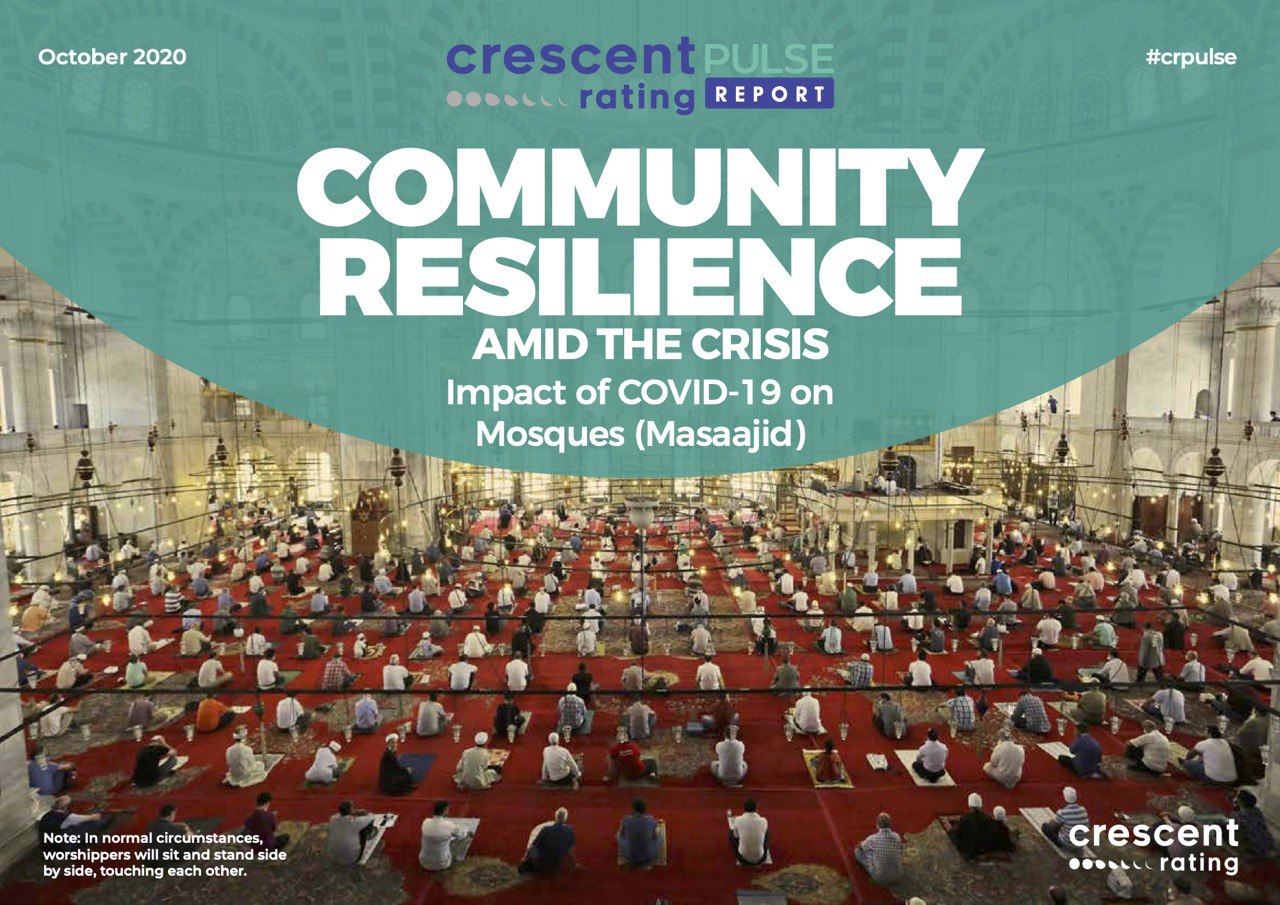
The Muslim community is a close-knit community that transcends culture, ethnicity and geographical boundaries. Mosques play a vital role in this ecosystem, serving as centres where Muslims congregate for a range of activities including congregational prayers, religious classes and even events such as weddings. However, amidst the COVID-19 2020 pandemic, mosques and the communities they serve face increasing and unprecedented pressures to adapt and evolve.
This CrescentRating Pulse Report takes a snapshot of how mosques from over 60 destinations have responded to the COVID-19 pandemic. Through a global survey done in September and October 2020, findings from more than 400 respondents in 190 cities reveal a united global Muslim community. This community works hand in hand with mosque leaders to weather the pandemic storm. Amid measures aimed at increasing accessibility, adaptability and engagement, mosques are bringing together communities with better assurance as well as deeper unity and bonds with one another and the wider population.
CrescentRating Pulse (CR Pulse) reports measure stakeholder heartbeats and rhythms which include perspectives, sentiments and attitudes concerning lifestyle changes, trends and events affecting them. CR Pulse findings aim to provide readers and decision makers with quick evidence based insights and early future signals on significant market behavioural changes and developments.
The impact of COVID-19 on the mosque community can be studied from three areas: Accessibility, Adaptability and Engagement. Each of these areas lead to a greater effect within and around the community.
Majority of mosques in cities are open for private worship. Despite most mosques being open, almost half of those mosques had their congregational prayers disrupted.
Mosques have quickly adopted the measures required to ensure the safety of the worshippers, even if some of them are alien to how services are performed within the mosques. This has brought unity within the community as well as with the rest of the population.
Despite the threat of COVID-19 in deteriorating social relations due to isolation and social distancing measures, mosques have done well in engaging with their communities. More than one-third of respondents are very satisfied with the level of communications and information provided.
Mosques are not only places of worship. In Islam, they serve several roles including community centres and educational institutions.
Majority of mosques in cities are open for private worship. Despite most mosques being open, half of those mosques were still not conducting 5 daily congregational prayers. However, Friday prayers (Jumu’ah) are still conducted in more than 70% of countries albeit with some restrictions.
The accessibility of mosques still remains disrupted by the impact of COVID-19. Even for mosques that are open, the accessibility is supplemented by measures that are in place to ensure the safety of worshippers. This forges an understanding within and beyond the community that accessibility should not come at the expense of safety.
Mosques have quickly adopted the measures required to ensure the safety of the worshippers, even if some of them are alien to how services are performed within the mosques. This shows that the mosques have been instrumental in bringing unity within the community as well as with the rest of the population.
Although most countries have opened up mosques for congregational worship, the vast majority of them have put in place social distancing measures as well as measures to reduce the contact between worshippers and to adapt rituals.
How much of these practices will become a part of the new normal depends on the level of containment of the virus. This is also an opportunity to re-think some of the future design elements of a mosque to withstand such crises in the future.
The Muslim community is interwoven both in spirit and practice. Despite the threat of COVID-19 in deteriorating social relations due to isolation and social distancing measures, mosques have done well in engaging with their communities.
More than one-third of respondents are very satisfied with the level of communications and information provided by mosques, with about another third viewing current engagement levels as being adequate. These have come in the form of both offline channels such as signages and announcements, to include new digital communications capabilities which mosque staff have been proactive and positive in embracing.
The bond between mosques and the Muslim communities they serve remains strong and meaningful. Mosques need to continue to monitor the effectiveness of their communications channels, adjust when required, and record best practices for continuation post-pandemic.
“Worshippers only make obligatory prayers in the mosque. Mosques have covered their carpets with easy-to-sanitize plastic. Friday prayers are in two phases in order to limit the number of people at one time.”
“By practising the safety measures, we are helping the community to stay safe and healthy. Slowly as the pandemic risk gets low, mosques are loosening the measures step by step.”
“Necessary measures as per the government guidelines are taken to avoid the spread of the COVID-19 infection. It is better to be safe than sorry. If a mosque is found to be affected then we have to go through a major expense to clean and possibly shut for several weeks.”
Photo Caption: One of the most prominent impacts of COVID-19 on mosques can be seen in the way congregational prayers are held. In the past, worshippers sit and stand side-by-side, touching each other (Left photo). Today, worshippers maintain a 1-meter social distance from one another (Right photo).